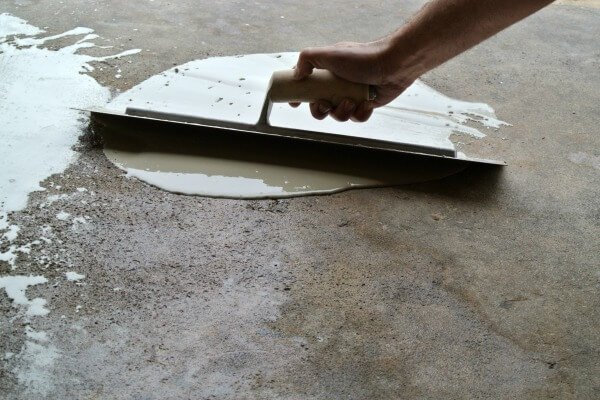
29 Jan Repairing Concrete
Concrete is used in and around the house as a surface for solid floors, drives paths and walls. In common with other building materials, it suffers from effects of damp-spalling and efflorescence and related defects such as cracking and crumbling. Repairs can usually be made in much the same way as for brickwork and render, although there are some special considerations you should be aware of. If the damage is widespread, it is common practice to resurface it prior to decorating.
Sealing concrete:-
New concrete has a high alkali content and efflorescence can develop on the surface as it dries out. Do not use any finish other than water thinned paint until the concrete is completely dry. Treat efflorescence on concrete as for brickwork.
A porous concrete wall should be water proofed with clear sealant on the exterior. Some reinforcement emulsions will cover bitumen satisfactorily but it will bleed through most paints unless you prime it with a PVA bonding agent diluted 50% with water. Alternatively use aluminium spirit based sealer.
Cleaning Dirty Concrete:-
Clean dirty concrete as you would brickwork. Where a concrete drive or Garage floor for instance is stained with patches of grease or oil soak up fresh spillage immediately to prevent them becoming stains. Sprinkle dry sand on to the patches of oil to absorb any liquid deposits, collect it up and wash the area with white spirit or degreasing solution.
Binding Dusty Concrete:-
Concrete is trowelled when it is laid to give it a flat finish, if this is overdone the cement is brought to the surface and when the concrete dries out then this thin layer of begins to break up within a short time producing a loose dusty surface. You must not apply a decorative finish to the concrete in this condition. Treat a concrete wall with stabilising primer, but paint a dusty floor with one or two coats of PVA bonding agent mixed with five parts of water. Use the same solution to prime a particularly porous surface.
Making Good Cracks and Holes:-
Rake out and brush away loose debris from cracks or small holes in the concrete. If the crack is less than 6mm wide, open it up a little with a cold chisel so that it will accept filling. Undercut the edges to form a lip so that the filler will grip better.
To fill large holes in concrete ad a fine aggregate such as crushed rock to the cement and sand mix. make sure that the concrete sticks on shallow surfaces by priming the damaged edges with a bonding agent, when the primed surface becomes tacky then trowel in the concrete and smooth it out.
There are numerous ready to use handy man products on the shelf that need no mixing except with water.
If you have any further questions please call our office.



